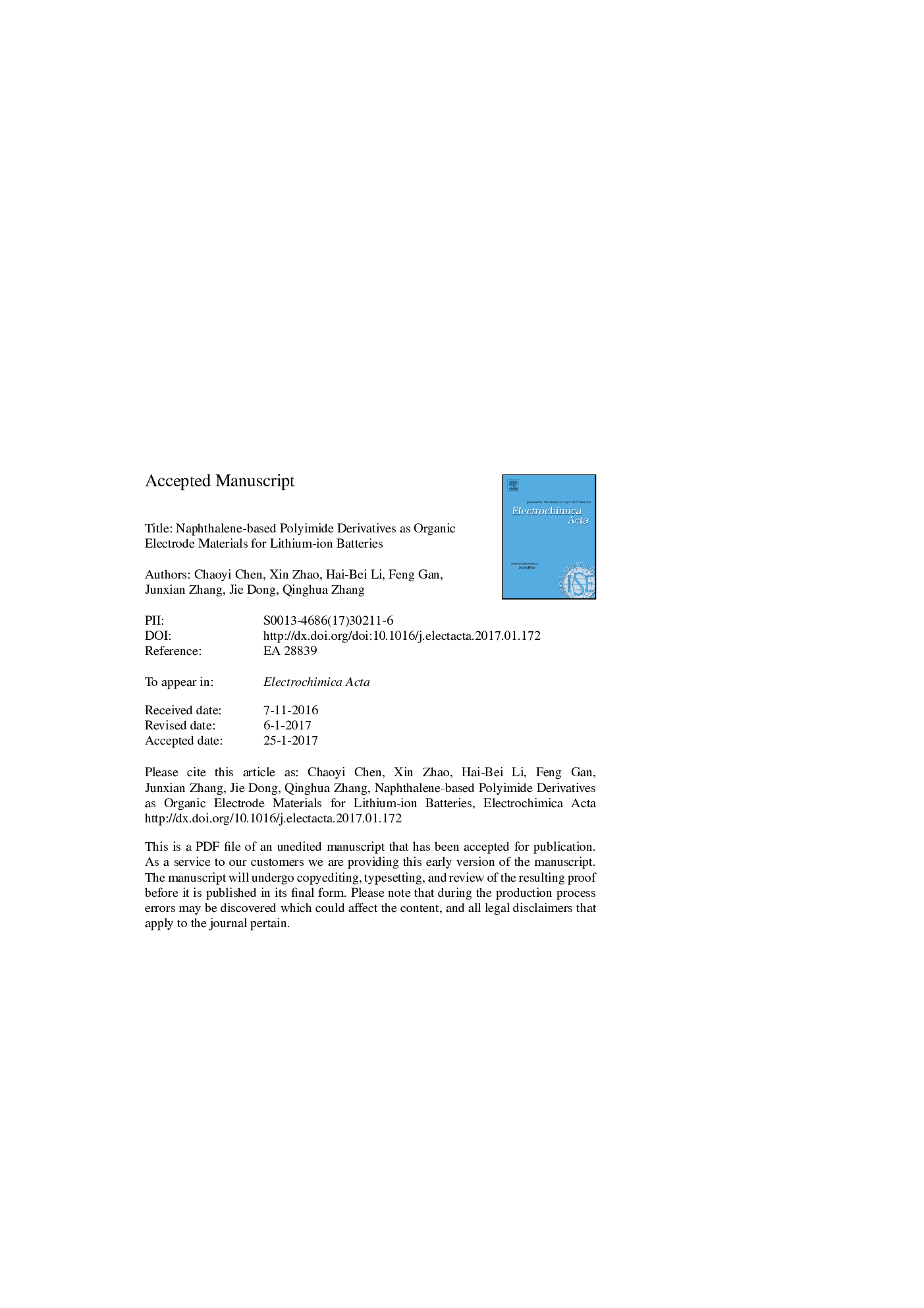| Article ID | Journal | Published Year | Pages | File Type |
|---|---|---|---|---|
| 4767322 | Electrochimica Acta | 2017 | 20 Pages |
Abstract
Two naphthalene-based polyimide derivatives are fabricated through a facile condensation polymerization by 1,4,5,8-naphthalenetetracarboxylic dianhydride (NT) with different two diamines, e.g., urea and ethylenediamine, respectively. Their structures with morphologies are studied and the electrochemical properties are investigated as cathode materials for rechargeable lithium-ion batteries (LIBs). By comparison to NT, the polymers with carbonyl functionalities as electroactive groups show improved stability in electrolyte. The obtained derivative (NOP) from NT and urea with more redox active sites exhibits a higher discharge capacity and better rate performance, which might be attributed to its relatively lower molecule weight of the framework and the introduction of additional carbonyl group inherited from urea unit. It displays an average reversible capacity of 174.5 mAh gâ1 at 20 mA gâ1 and a good rate performance with a high value of 133.5 mAh gâ1 at 500 mA gâ1. With an optimized polymerization conditions, its capacity could remain 153 mAh gâ1 after 60 cycles of charge-discharge processes at 50 mA gâ1, making it a potential material for greener and sustainable electrode for electrochemical storage devices.
Related Topics
Physical Sciences and Engineering
Chemical Engineering
Chemical Engineering (General)
Authors
Chaoyi Chen, Xin Zhao, Hai-Bei Li, Feng Gan, Junxian Zhang, Jie Dong, Qinghua Zhang,
